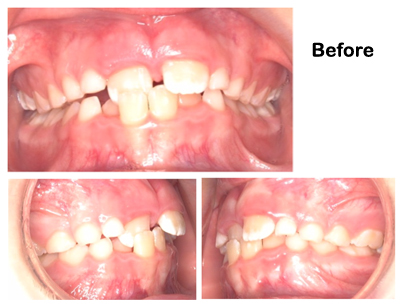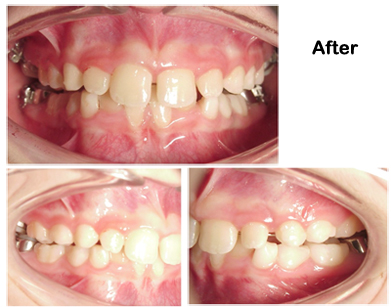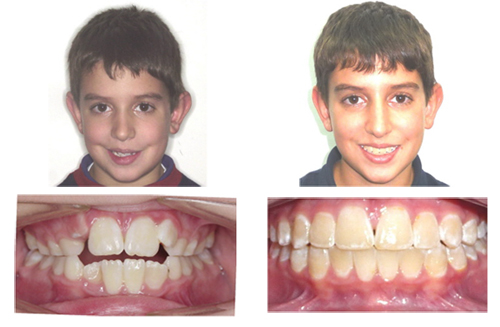Often the dentist can detect developing orthodontics problems even before the permanent teeth erupt. For example, baby teeth with little or no spacing between them usually indicates that the permanent teeth will be crowded. In the past, orthodontic treatment was postponed until all the permanent teeth were in, about age 11 or 12. This is still a good choice for many children with mild orthodontic problems, because it gives a well-corrected result with a single phase of treatment which lasts 18 to 24 months.

We now believe that the more severe crowding problems should be treated earlier. We use a form of therapy for the more severe crowding problems called Early Arch Development. I believe it is advisable to begin treatment early because we can get a significant improvement in the straightness of these children’s teeth and help their self-image during the elementary school years.


The idea of Early Arch Development is to expand the upper and lower arches in width with a pair of appliances. As the teeth erupt, and the bone grows, the appliances that are cemented in the mouth behind the teeth will make sufficient space for the teeth to align themselves. Active therapy lasts 8 to 12 months, and then retainers are placed to keep the arches stable. The sooner the treatment is begun, the more successful it will be, but it is not necessary to begin until the first two permanent teeth have come in.

Once the early arch development treatment is finished, the teeth often continue to get somewhat straighter as time goes on. In a few cases, early arch development is the only phase of treatment that a child needs. In most all cases, there is still slight crowding or misalignment of the bite at age 11 or 12 when all the permanent teeth are in, and a shortened phase of braces can achieve the final result. I believe that the advantages of Early Arch Development are earlier improvement of the problem, more stable final results, less likelihood of the need to extract permanent teeth, and less time spent in the final phase of braces during the teen years.
